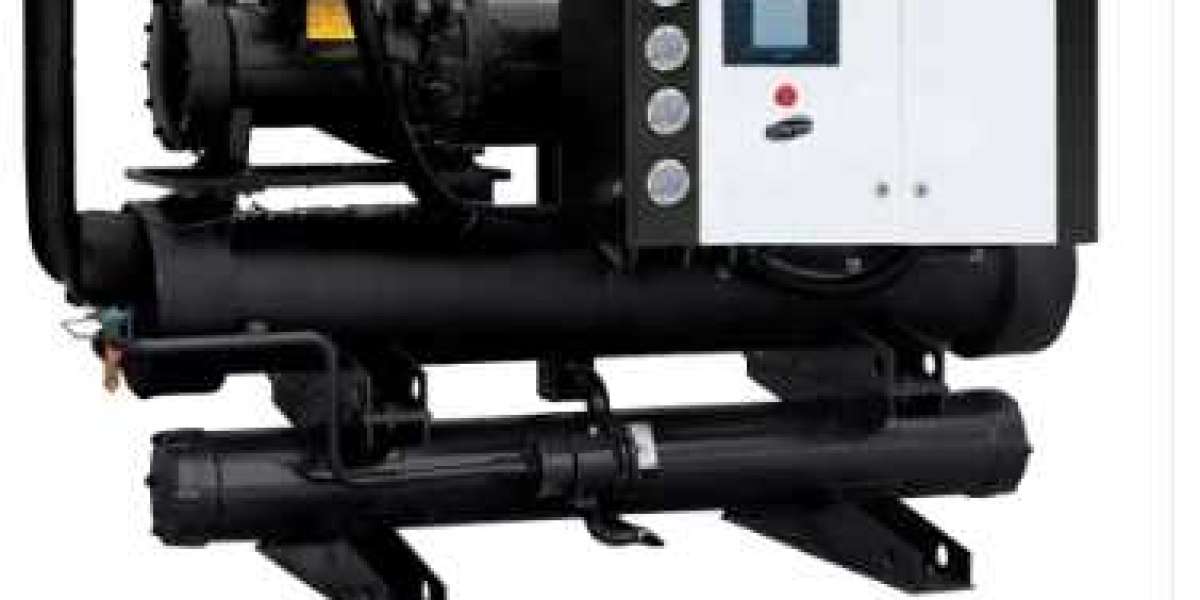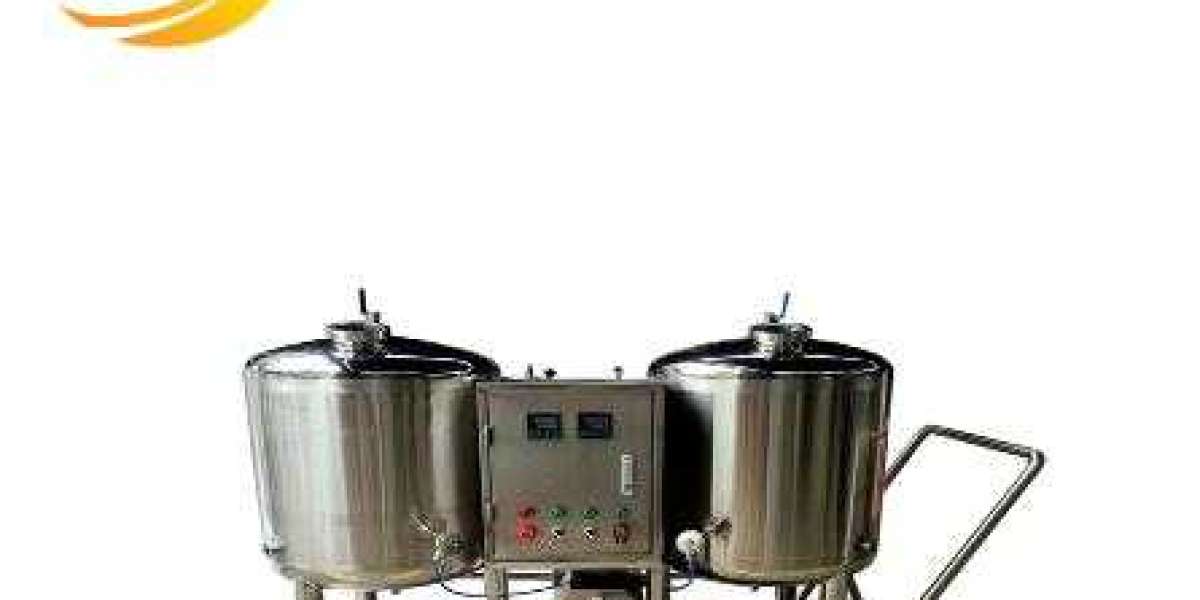Water-cooled central water chillers play a vital role in various industries, ensuring efficient cooling systems. These chillers offer superior performance and energy efficiency compared to air-cooled alternatives. By utilizing water as the cooling medium, they provide consistent and reliable temperature control for large-scale applications. The design of these chillers allows for seamless integration into existing infrastructure while minimizing maintenance requirements. Companies seeking cost-effective and sustainable cooling solutions often turn to water-cooled central water chillers for their operational needs.
Overview of Central Plant Systems and Chilled Water Systems
Efficient Cooling Solution
Water-cooled central water chillers offer an efficient cooling solution for large buildings and industrial facilities. By using water as a medium to transfer heat, these systems provide reliable and effective cooling throughout the entire space. The centralized nature of water-cooled central water chillers ensures consistent cooling performance across different areas within a building or facility.
Centralizing the cooling process with water-cooled central water chillers allows for easier maintenance and monitoring of the system. With all components located in one place, it becomes simpler to conduct regular inspections, repairs, and upgrades when necessary. This centralized approach also leads to improved energy efficiency since the system can be optimized more effectively.
Pros:
Energy-efficient
Easy maintenance due to centralized setup
Consistent cooling performance
Widely Used in Commercial Applications
Water-cooled central water chillers are widely utilized in commercial applications due to their effectiveness and reliability. Buildings such as office complexes, shopping malls, hospitals, and hotels often rely on chilled water systems for their cooling needs. The scalability of these systems makes them suitable for various sizes of commercial properties.
In industrial settings like manufacturing plants or data centers, water-cooled central water chillers play a crucial role in maintaining optimal operating conditions. These systems can handle heavy-duty cooling requirements efficiently while offering the flexibility needed in dynamic industrial environments.
Steps:
Conduct a thorough assessment of cooling requirements.
Determine the appropriate capacity of the water-cooled chiller unit.
Install the chiller unit centrally within the facility.
Key Information:
Commonly used in large buildings and industrial facilities.
Utilize water as a heat transfer medium for efficient cooling.
How Water-Cooled Chillers Work: The Refrigeration Cycle
Refrigeration Cycle Overview
Water-cooled central water chillers operate by utilizing a refrigeration cycle to extract heat from the process fluid. This cycle consists of several key stages: compression, condensation, expansion, and evaporation of the refrigerant. For example, during compression, the refrigerant is pressurized by the compressor to increase its temperature.
The next stage involves condensing the high-pressure gas into a liquid state in the condenser. As this happens, heat is released from the refrigerant to the surroundings. Following this, there is an expansion phase where the pressure of the refrigerant is reduced rapidly through an expansion valve or device. Subsequently, as it expands, its temperature drops significantly.
Chilling Process Details
After expansion comes evaporation; here, in evaporator coils or tubes, low-pressure liquid evaporates back into a gas form as it absorbs heat from chilled water circulating through these coils or tubes. This absorption causes a drop in water temperature that can then be used for cooling purposes within various systems like air conditioning units.
One advantage of using water-cooled central water chillers lies in their energy efficiency compared to air-cooled models since they can effectively remove large amounts of heat without consuming excessive power. However, one drawback could be higher maintenance costs due to more intricate components and potential issues associated with water circulation systems.
Key Components of Water-Cooled Chillers
Compressor
The compressor is a vital component of water-cooled central water chillers. It plays a crucial role in the refrigeration cycle by increasing the pressure and temperature of the refrigerant gas. This process enables the refrigerant to absorb heat efficiently from the chilled water circulating through the system.
A compressor can be likened to a pump that moves refrigerant throughout the chiller's components, ensuring that it undergoes phase changes necessary for cooling. Without an operational compressor, the entire cooling process would come to a halt, rendering the chiller ineffective in maintaining optimal temperatures within industrial or commercial settings.
Condenser and Evaporator
In conjunction with other parts like evaporators and condensers, water-cooled central water chillers operate seamlessly to regulate temperatures effectively. The condenser, specifically, serves as a critical element responsible for transferring heat from the refrigerant gas to cooling water passing through it.
This exchange of heat allows for efficient cooling processes within various applications where these systems are utilized. Working hand in hand with other essential components like evaporators ensures that water-cooled chillers can consistently provide reliable cooling solutions across different industries.
Features and Benefits of Industrial Water-Cooled Chillers
Precise Temperature Control
Industrial water-cooled central water chillers excel in providing precise temperature control for crucial processes. This accuracy ensures that operations dependent on specific temperatures run smoothly without fluctuations. For example, in manufacturing processes such as plastic injection molding or food processing, maintaining a consistent temperature is vital for product quality.
Ensures stable operating conditions
Prevents damage to sensitive equipment
High Cooling Capacities
These chillers are capable of handling high cooling capacities required by large-scale industrial operations. With the ability to efficiently cool down significant volumes of water or air, they are ideal for applications where substantial cooling power is essential, like data centers or pharmaceutical production facilities.
Suitable for heavy-duty cooling requirements
Perfect for continuous operation in demanding environments
Durability and Reliability
Designed with durability and reliability in mind, industrial water-cooled chillers offer long-term performance benefits. Their robust construction ensures they can withstand harsh industrial settings while delivering consistent cooling performance over extended periods.
Long lifespan with minimal maintenance needs
Reduced risk of unexpected breakdowns
Customization and Controls for Enhanced Performance
Customization
Water-cooled central water chillers offer customization options to suit specific cooling needs. Tailoring the chiller's specifications allows it to efficiently cool various industrial processes. For example, in a food processing plant, a water-cooled chiller can be customized to maintain precise temperatures required for production.
Customizable features include the chiller's capacity, size, and configuration. By adjusting these parameters based on cooling requirements, businesses can ensure optimal performance and energy efficiency. This flexibility makes water-cooled chillers versatile solutions for diverse applications such as pharmaceutical manufacturing or data centers.
Pros:
Efficient cooling tailored to specific needs
Versatile for various industries
Advanced Controls
The integration of advanced controls in water-cooled chillers enables precise temperature regulation and energy optimization. These controls allow operators to monitor and adjust cooling parameters with accuracy. For instance, sophisticated control systems can modulate compressor speed based on real-time demand, improving overall system efficiency.
Moreover, advanced controls facilitate predictive maintenance by monitoring key performance indicators continuously. By analyzing this data in real-time, potential issues can be identified early on before they escalate into costly problems that could lead to downtime.
Set precise temperature thresholds.
Monitor system performance regularly.
Adjust settings for optimal energy usage.
Building Management System Integration
Water-cooled central water chillers can integrate seamlessly with building management systems (BMS) for remote monitoring and control capabilities. Through BMS integration, facility managers can oversee the chiller's operation from a centralized location using a web browser interface.
This feature allows users to access critical information about the chiller's performance anytime from any location with internet connectivity securely through encrypted connections using cookies stored within their browsers' cache memory.
Large Capacity and Rugged Design for Industrial Needs
High Heat Load Cooling Capability
Water-cooled central water chillers excel in providing cooling for industrial processes with high heat loads. These chillers efficiently remove heat from the process, ensuring smooth operation even under extreme conditions. The ability to handle substantial heat loads makes them ideal for large-scale industrial applications where consistent cooling is crucial.
Water-cooled chillers are specifically engineered to cater to the demanding requirements of industrial settings. Their robust design allows them to operate effectively in harsh operating conditions, maintaining optimal performance levels. For factories or facilities with continuous cooling needs, these chillers offer a reliable solution that can withstand heavy-duty usage without compromising efficiency.
Longevity and Reduced Downtime
The rugged construction of water-cooled central water chillers contributes significantly to their longevity and durability. By utilizing high-quality materials and components, these chillers are built to last, minimizing the risk of frequent breakdowns or malfunctions. This reliability translates into reduced downtime for industrial operations, ensuring uninterrupted production processes within a factory environment.
Pros:
Efficiently removes heat from high heat load processes.
Designed to withstand harsh operating conditions.
Reduces downtime through rugged construction.
Cooling Tower's Role in Efficiency and Performance
Heat Dissipation
Cooling towers play a crucial role in the efficiency of water-cooled central water chillers by aiding in heat dissipation. As the chiller absorbs heat from processes or buildings, the cooling tower helps release this heat into the atmosphere. This process allows the cooling water to return to lower temperatures, ready to absorb more heat from the system.
Proper functioning of a cooling tower ensures that the cooling water remains at optimal operating temperatures for efficient operation of the chiller. When paired with water-cooled chillers, these towers prevent overheating by removing excess heat generated during the chilling process. By maintaining suitable temperature levels, they contribute significantly to enhancing overall system performance and longevity.
Energy Efficiency
Efficient operation of water-cooled central water chillers is heavily reliant on well-maintained cooling towers. These structures aid in reducing energy consumption by promoting effective heat transfer mechanisms. By dissipating excess heat into the environment, they assist in keeping operating temperatures within acceptable limits for optimal chiller performance.
Properly maintained cooling towers can lead to significant energy savings by ensuring that chillers operate at peak efficiency levels.
Regular maintenance checks on cooling towers are vital for preventing issues such as scaling or corrosion that could impede their ability to dissipate heat effectively.
Well-functioning cooling towers contribute not only to improved energy efficiency but also help extend the lifespan of associated equipment like water-cooled chillers.
Easy Setup and Maintenance of Water-Cooled Chilling Systems
Simple Installation Process
Setting up water-cooled central water chillers is straightforward compared to other cooling methods. The installation involves connecting the chiller unit to the water system, ensuring proper electrical connections, and testing the system for efficiency. Once installed, these systems efficiently cool large industrial spaces.
Water-cooled chilling systems are popular due to their ease of setup; they require minimal additional components beyond standard plumbing fixtures. This simplicity reduces installation time and costs associated with more complex cooling solutions.
Routine Maintenance Benefits
Maintaining chilled water systems includes essential tasks like cleaning condenser tubes, monitoring refrigerant levels, and inspecting electrical connections regularly. These routine checks prevent issues that could lead to reduced efficiency or equipment failures.
Regular maintenance of water-cooled chilling systems is crucial for optimal performance. It ensures efficient operation by keeping all components clean and functioning correctly. By conducting regular checks on key elements like refrigerant levels, users can prolong equipment lifespan significantly.
Pros:
Straightforward installation process
Reduced maintenance costs due to preventive care
Final Remarks
The detailed exploration of water-cooled central water chillers has shed light on the intricacies of these vital industrial systems. Understanding the refrigeration cycle, key components, customization options, and the role of cooling towers provides a comprehensive view of their operation and benefits. From enhancing efficiency to meeting large-scale industrial demands, water-cooled chillers stand as reliable solutions for precise temperature control in various applications.
To leverage the advantages of water-cooled central water chillers fully, industry professionals are encouraged to consider customization options that align with their specific needs. Regular maintenance and monitoring of these systems are paramount to ensure optimal performance and longevity. By staying informed about the latest advancements in chiller technology and implementing best practices, organizations can maximize operational efficiency and productivity in their cooling processes.








